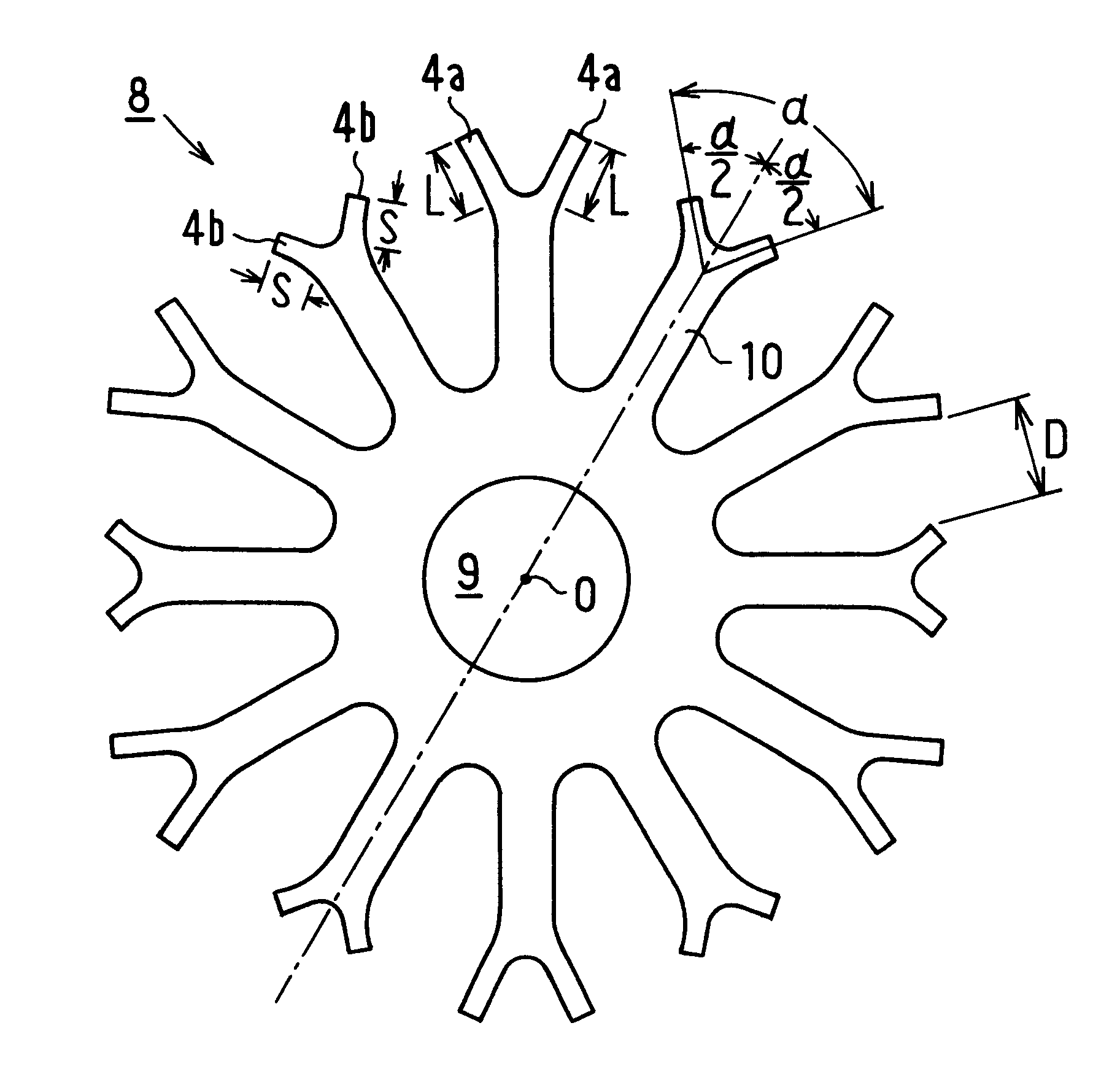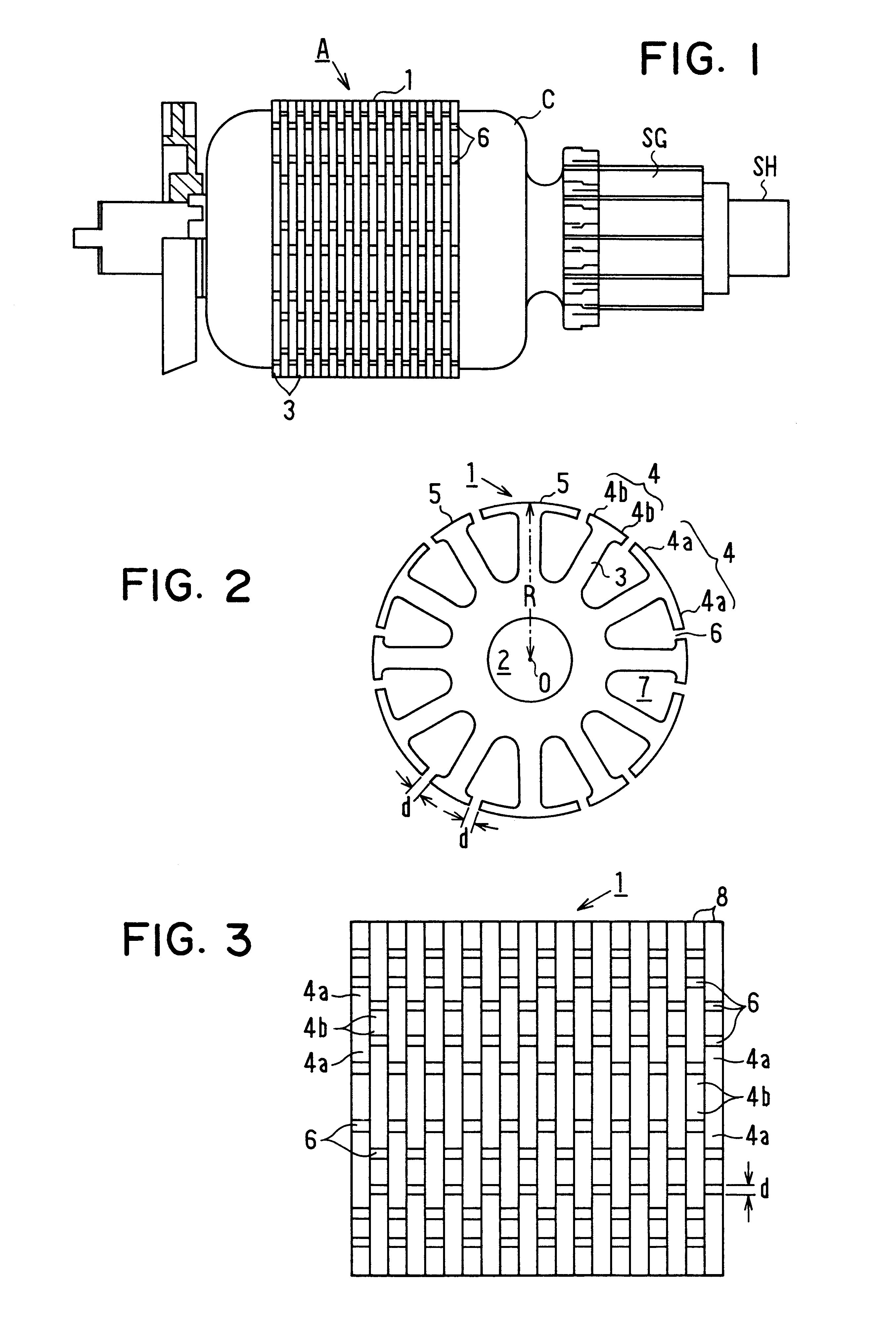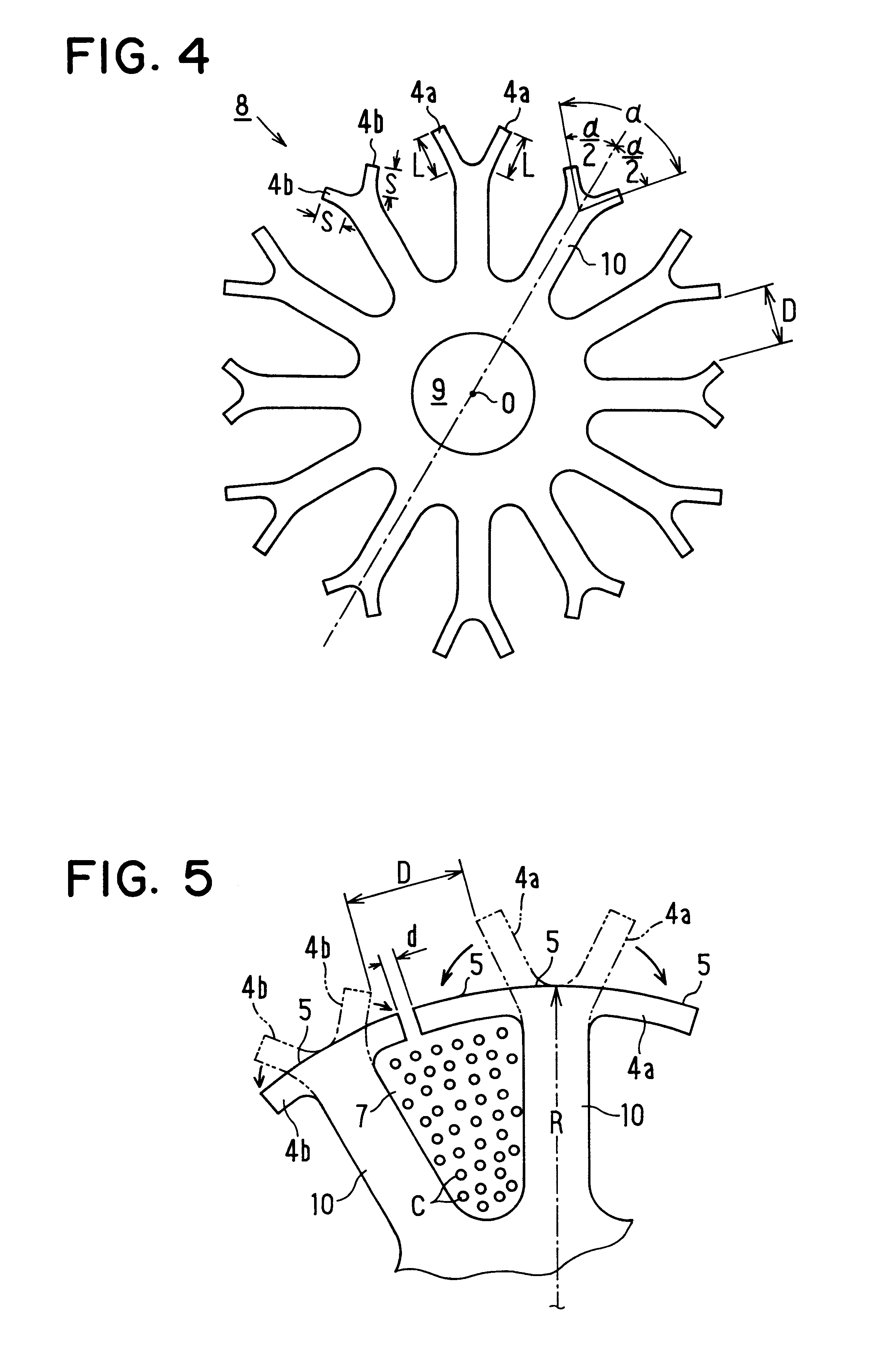Core sheet, core and method of manufacturing an armature
a technology of core and armature, which is applied in the direction of dynamo-electric machines, magnetic circuit rotating parts, magnetic circuit shape/form/construction, etc., can solve the problems of reluctance changes and cogging in the torque of the motor, and achieve less slipping out of the armature winding, less cogging in the torque, and high space factor
- Summary
- Abstract
- Description
- Claims
- Application Information
AI Technical Summary
Benefits of technology
Problems solved by technology
Method used
Image
Examples
first embodiment
The first embodiment provides the following advantages. (1) As the armature winding C is inserted through the wide opening having the width D between the protrusion pieces 4a, 4b before bending, it can be wound from the radially inner part (root) of the tooth 3 toward the radially outer part of the same densely in the slot 7. Thus, space factor of the armature winding C in the slot 7 can be increased. (2) As the slit 7 is formed only after inserting the armature winding C in the slots 7, the width d of the slit 6 does not affect the winding inserting operation. Thus, the slit width d can be set as narrow as possible thereby to reduce cogging in the torque of the motor. (3) As each core sheet 8 is displaced in the circumferential direction by one slot from the adjacent core sheet 8 when stacked, the slits 6 are arranged in crossing manner thereby to equalize the magnetic flux distribution. As a result, the reluctance changes do not occur at the same time among core sheets 8 during th...
second embodiment
(Second Embodiment)
In this embodiment, as shown in FIG. 6, each core sheet 11 is shaped to have the teeth 10 in the same configuration.
That is, each tooth 10 has a pair of long protrusion piece 4a and short protrusion piece 4b in such a manner that the long protrusion piece 4a and the short protrusion piece 4b are arranged alternately in the circumferential direction. The core sheets 11 are stacked to provide the core 1 in such a manner that the front surface and the rear surface of each core sheet 11 contact with the front surface and the rear surface of the adjacent core sheet 11, respectively. That is, the long protrusion piece 4a and the short protrusion piece 4b of each core sheet 11 are in contact with the short protrusion piece 4b and the long protrusion piece 4b, respectively, in the axial direction of the core 1. Thus, the core 1 has the slits 6 between the long protrusion piece 4a and the short protrusion piece 4b as shown in FIG. 7. The slits 6 are not arranged on the sam...
third embodiment
(Third Embodiment)
In this embodiment, as shown in FIG. 8, each core sheet 13 has either a pair of long protrusion pieces 4a or a pair of short protrusion pieces 4b on each tooth 10 as in the first embodiment. However, the tooth 10 is formed a pair of cuts 14 at the root part of the protrusion pieces 4a, 4b. That is, the width of the tooth 10 at the root part of the protrusion pieces 4a, 4b is narrowed by the cuts 14 as shown in FIG. 9. This third embodiment also provides the same advantages (1) to (5) as in the first and second embodiments. In addition, the cuts 14 enables easy bending of the protrusion pieces 4a, 4b in the direction to close the slots 7, thereby improving the efficiency of protrusion piece bending work.
PUM
 Login to View More
Login to View More Abstract
Description
Claims
Application Information
 Login to View More
Login to View More - R&D
- Intellectual Property
- Life Sciences
- Materials
- Tech Scout
- Unparalleled Data Quality
- Higher Quality Content
- 60% Fewer Hallucinations
Browse by: Latest US Patents, China's latest patents, Technical Efficacy Thesaurus, Application Domain, Technology Topic, Popular Technical Reports.
© 2025 PatSnap. All rights reserved.Legal|Privacy policy|Modern Slavery Act Transparency Statement|Sitemap|About US| Contact US: help@patsnap.com



